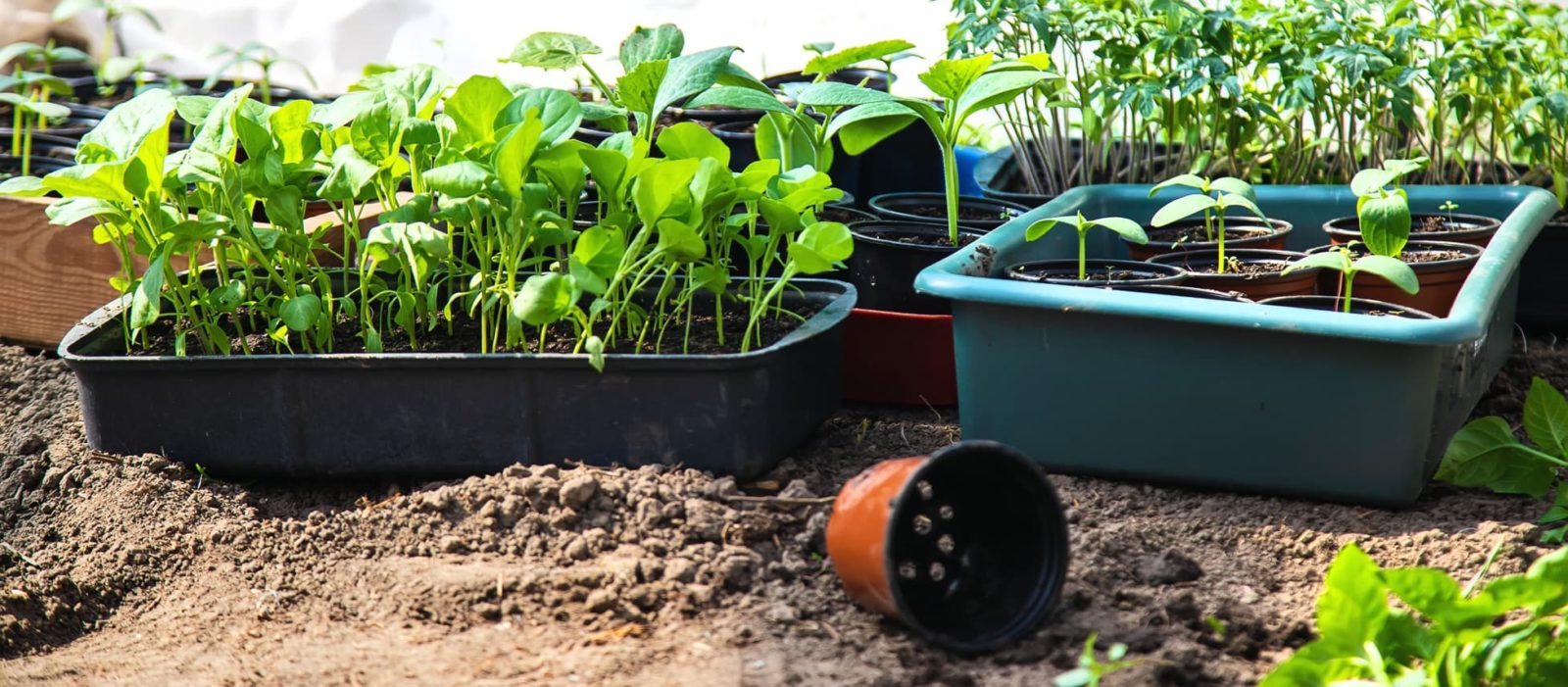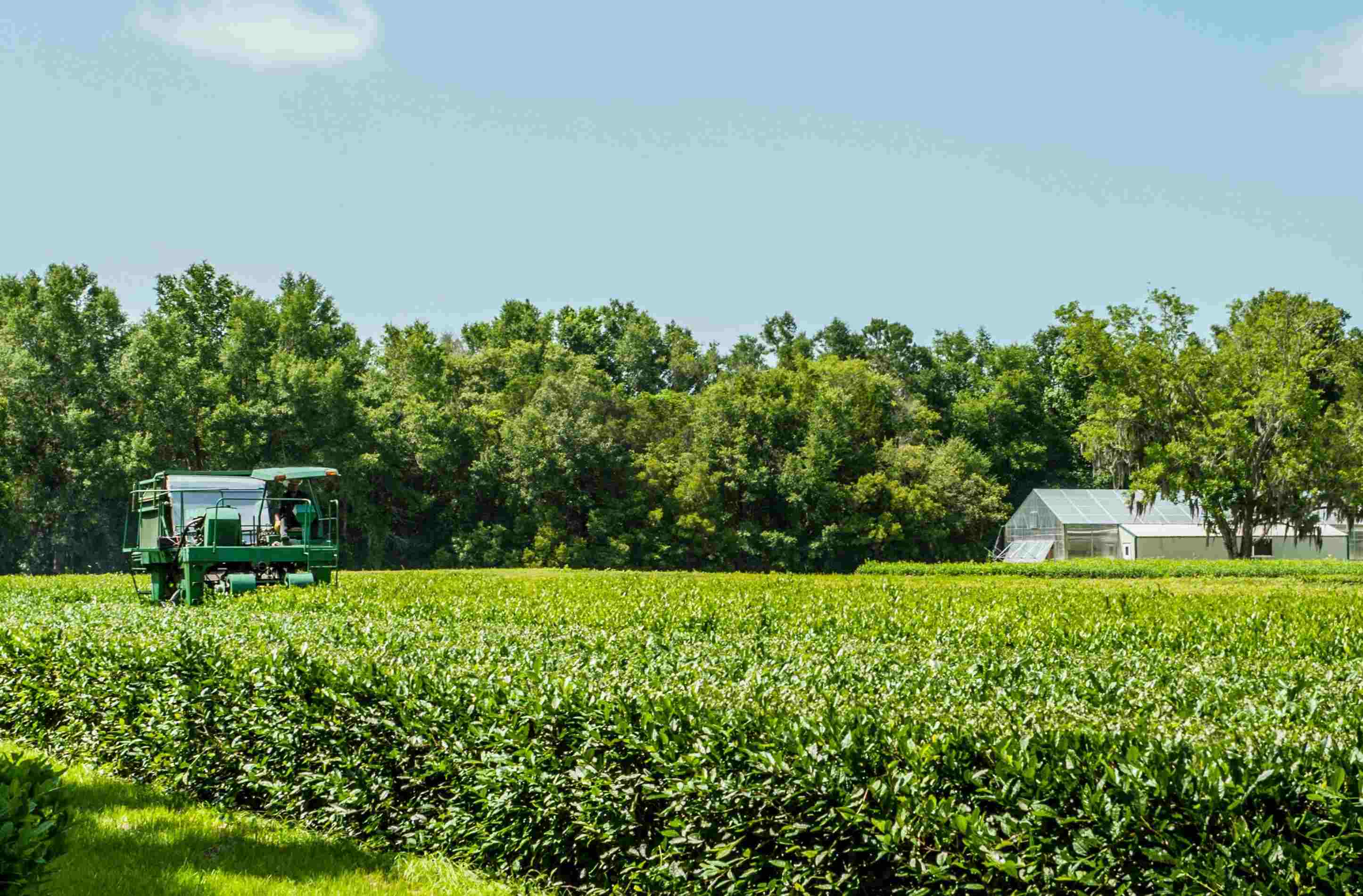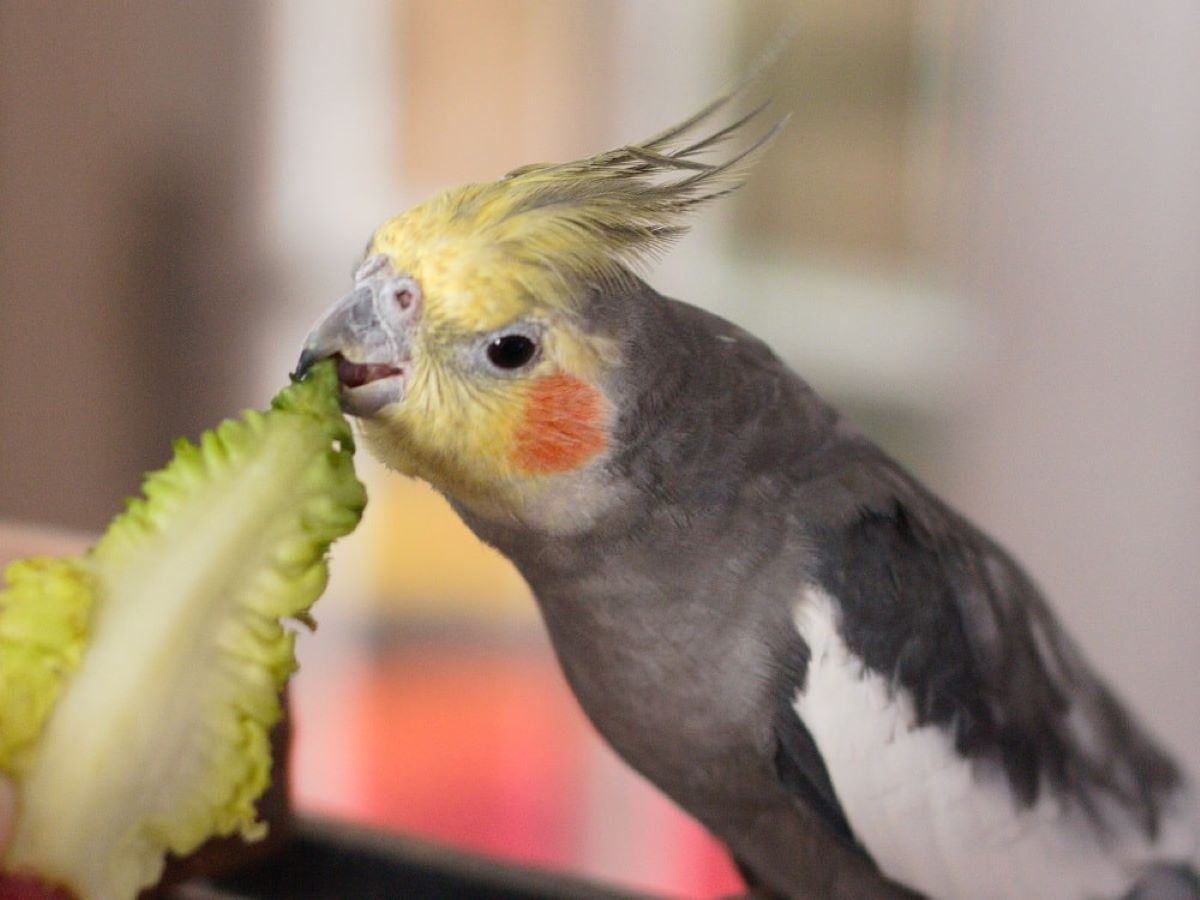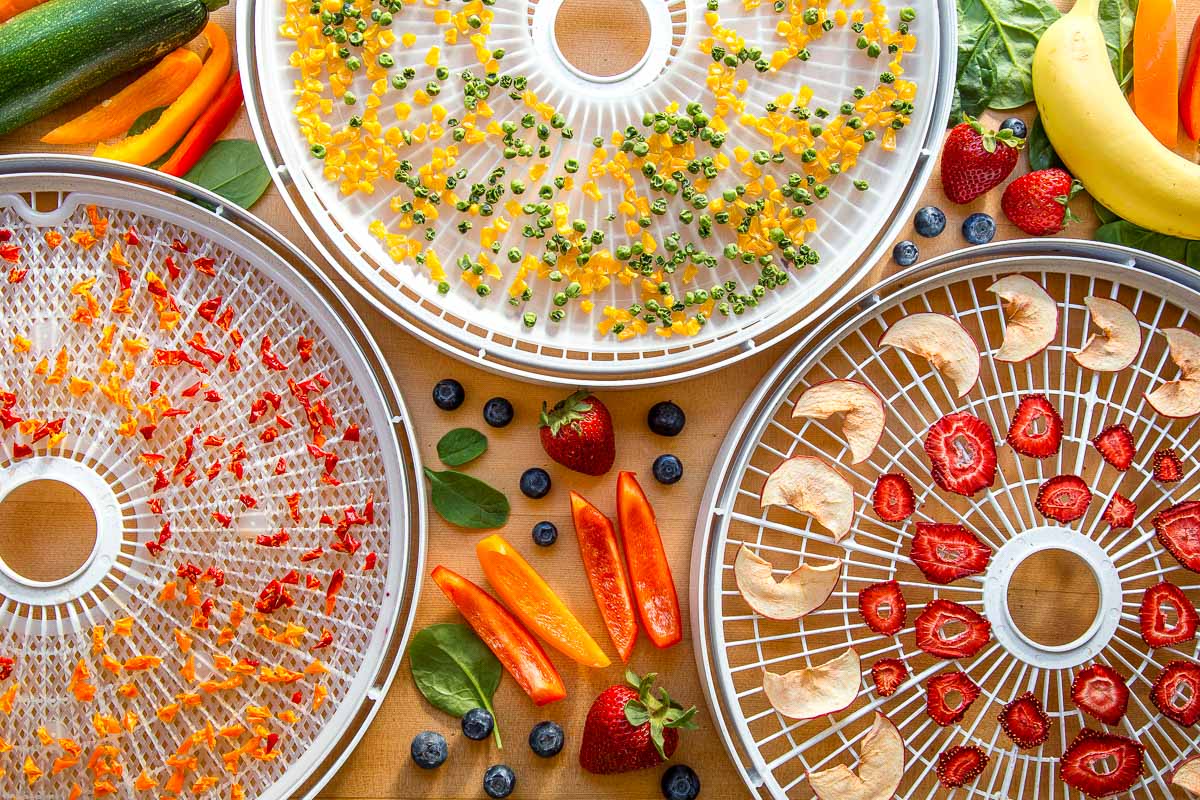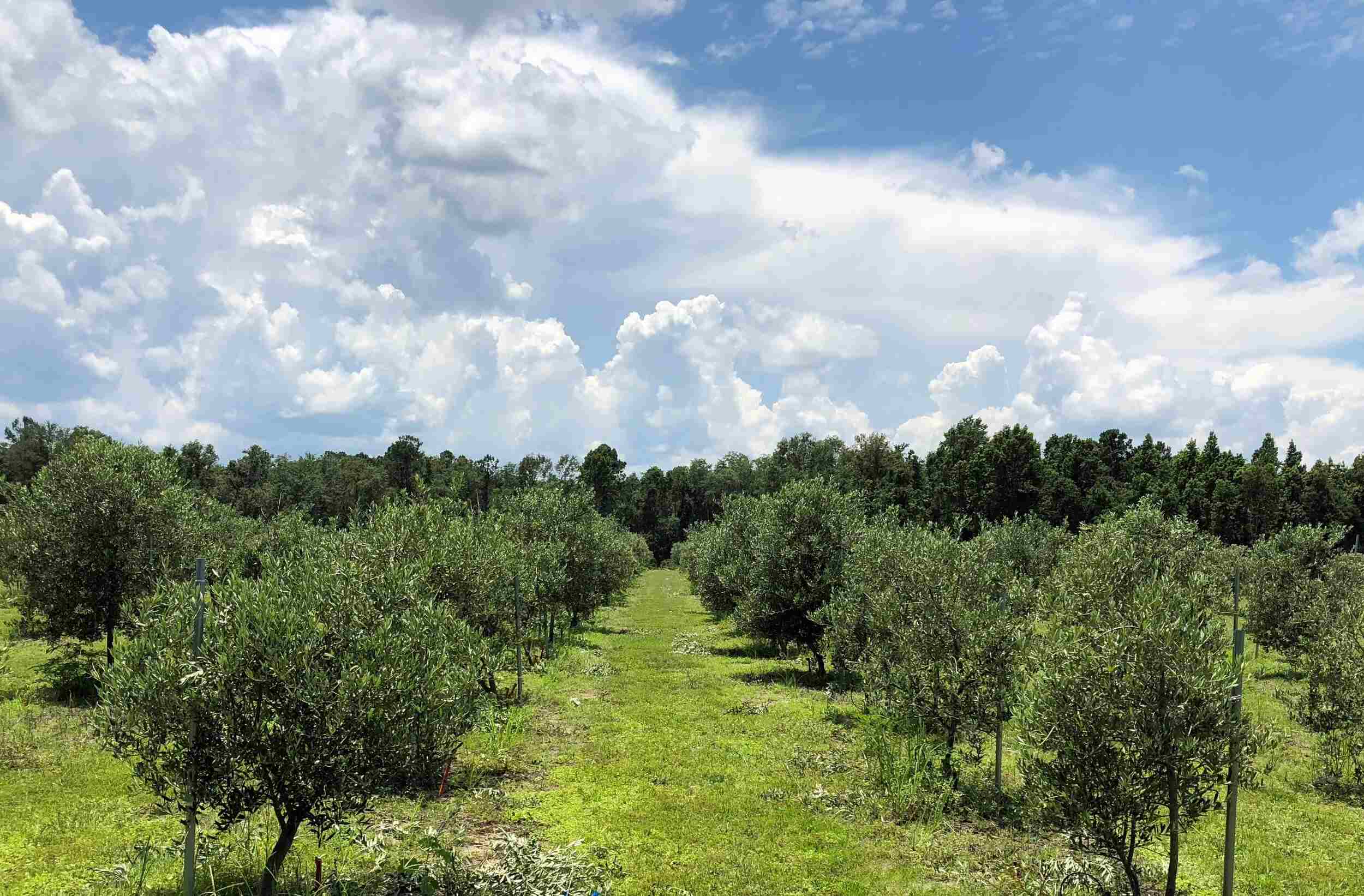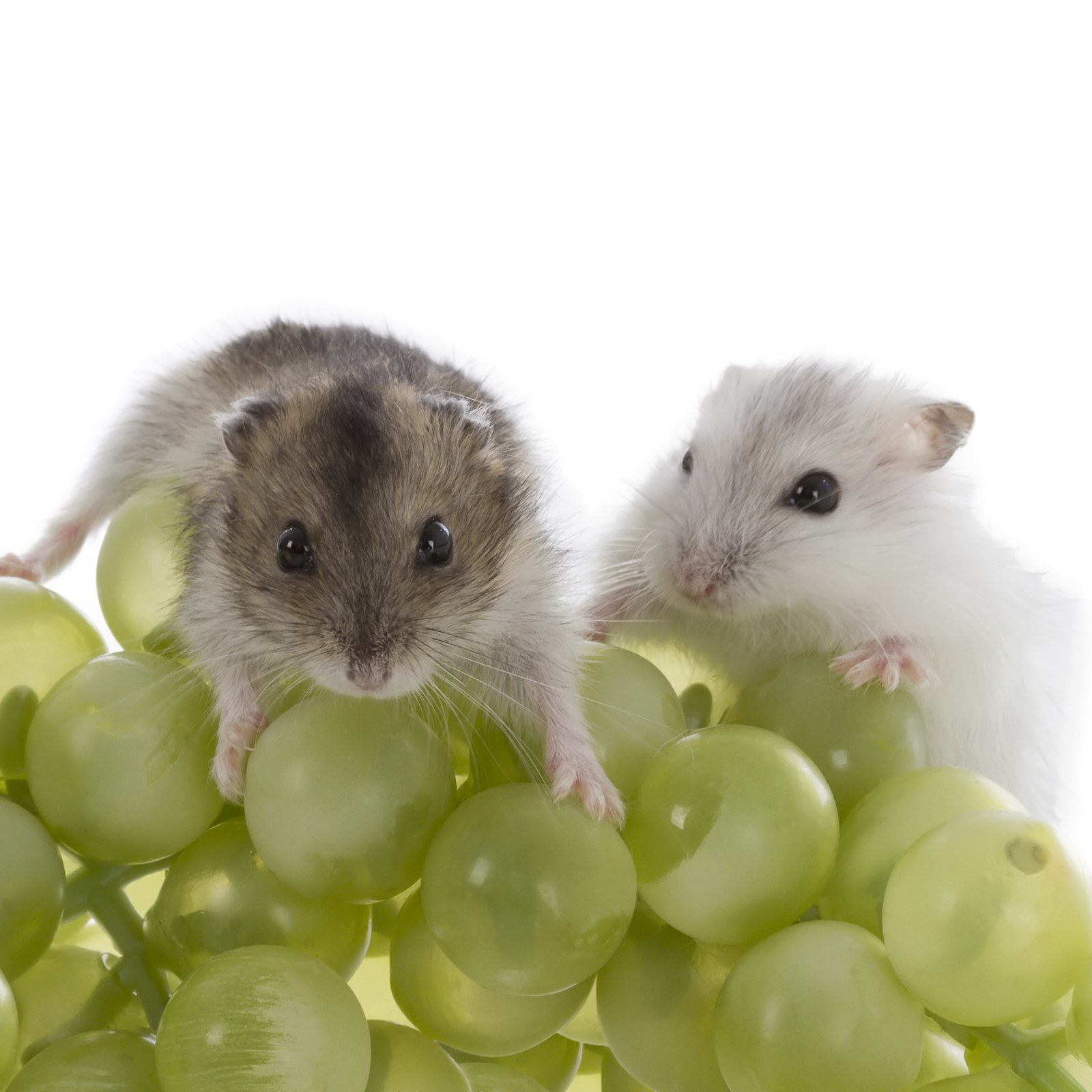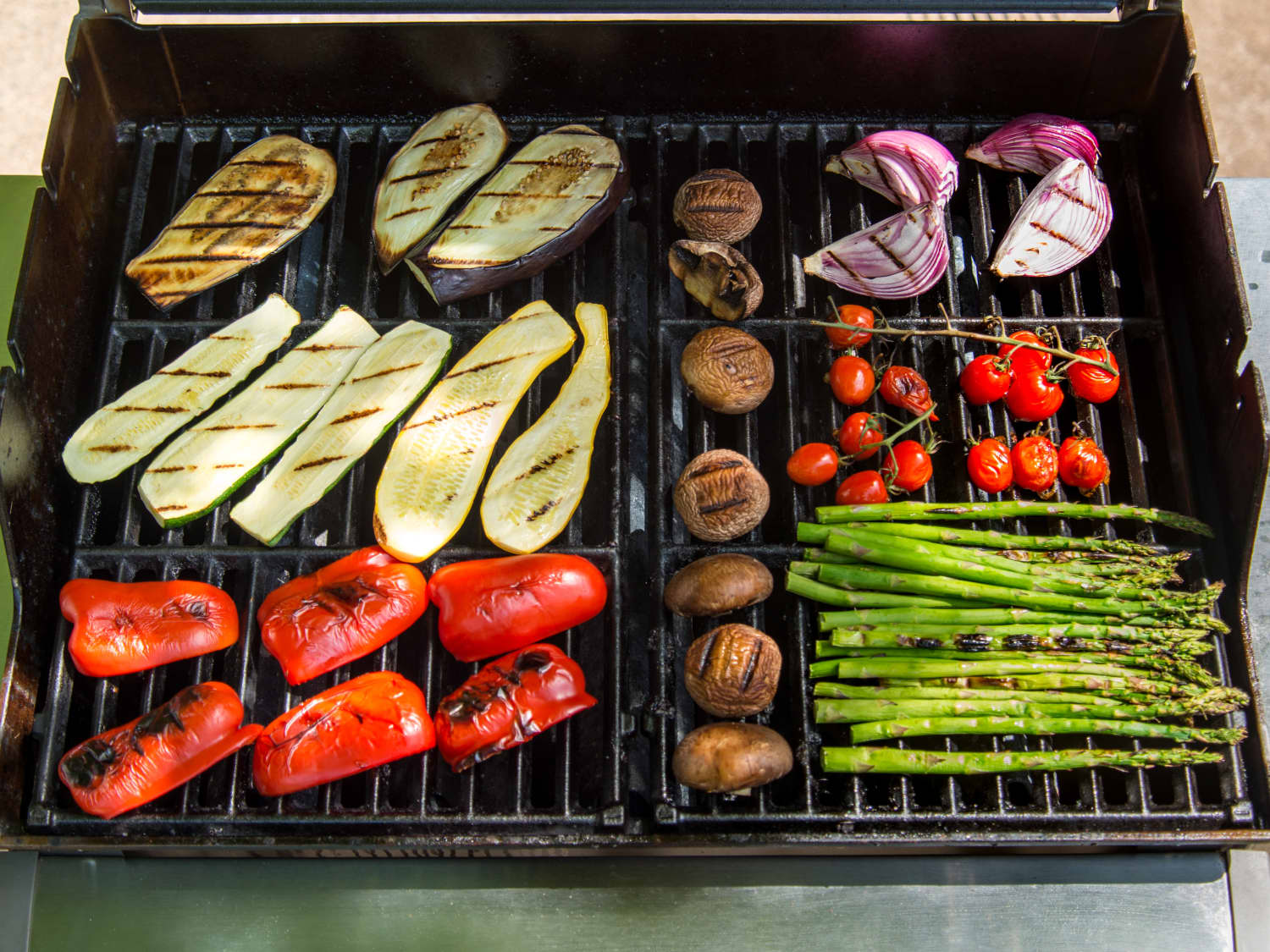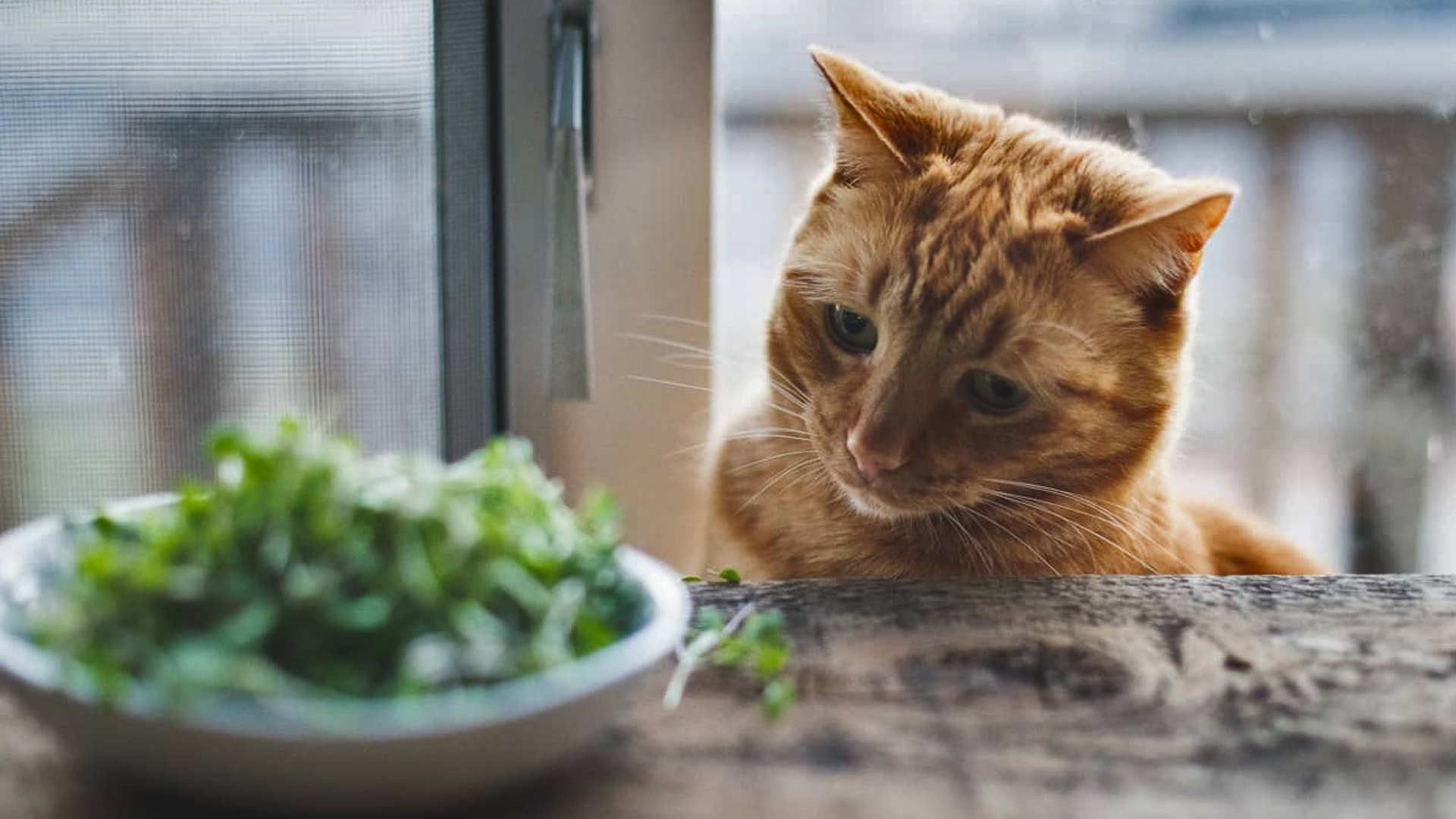Home>Gardening Basics>Understanding Soil>What Vegetables Can Be Planted Now In South Louisiana


Understanding Soil
What Vegetables Can Be Planted Now In South Louisiana
Modified: January 22, 2024
Looking to plant vegetables in South Louisiana? Learn about understanding soil for successful gardening. Discover which vegetables can be planted now.
(Many of the links in this article redirect to a specific reviewed product. Your purchase of these products through affiliate links helps to generate commission for Chicagolandgardening.com, at no extra cost. Learn more)
Table of Contents
Introduction
When it comes to vegetable gardening, South Louisiana offers a unique and favorable climate for planting a wide variety of vegetables throughout the year. The region’s warm and humid weather, combined with fertile soil, provides the perfect conditions for a successful harvest. Whether you are a seasoned gardener or just starting out, knowing which vegetables to plant now can greatly enhance your gardening experience.
But with so many options available, it can be overwhelming to decide what to plant. That’s why we have compiled a list of recommended vegetables that are suitable for planting in South Louisiana right now. These vegetables have been selected based on their adaptability to the region’s climate, as well as their popularity and nutritional value.
By planting these vegetables, you can not only enjoy the satisfaction of growing your own fresh produce, but also reap the health benefits that come with consuming homegrown fruits and vegetables. So let’s dive in and explore the vegetables that you can start planting today in South Louisiana!
Factors to consider for vegetable planting in South Louisiana
Before diving into the specific vegetables you can plant, it’s essential to understand the key factors that contribute to successful vegetable gardening in South Louisiana. By considering these factors, you can make informed decisions about what to plant and ensure optimal growth and yield from your garden.
Climate: South Louisiana experiences a warm and humid subtropical climate. The long growing season, which typically lasts from early spring to late fall, provides ample opportunities for growing a wide variety of vegetables. However, it’s important to keep in mind that the region can also have unpredictable weather, including heavy rainfall and occasional hurricanes. Understanding the climate patterns can help you plan proper irrigation, pest management, and protection measures for your garden.
Soil Type: South Louisiana is known for its fertile soil, but the soil composition can vary across different areas. It’s crucial to assess your soil type to determine its texture, drainage, and nutrient content. Conducting a soil test can provide valuable insights into its pH level and nutrient deficiencies. Based on the test results, you can amend the soil with organic matter, such as compost or well-rotted manure, to improve its structure and fertility.
Sunlight Exposure: Vegetables thrive in full sun, which typically means at least six to eight hours of direct sunlight. Ensure that your garden receives adequate sunlight throughout the day, especially during the growing season. If your garden has partially shaded areas, opt for shade-tolerant vegetables, such as leafy greens, that can still perform well with less sunlight.
Pest and Disease Management: South Louisiana’s warm and humid climate can create favorable conditions for pests and diseases. It’s essential to implement effective pest management strategies, such as regular inspection, proper sanitation, and organic or chemical control methods, to prevent and combat infestations. Additionally, choosing disease-resistant varieties of vegetables can help minimize the risk of plant diseases.
Watering and Drainage: Adequate watering and proper drainage are crucial for the health of your vegetable plants. South Louisiana’s high humidity can lead to excessive moisture retention in the soil, which may result in root rot and other water-related issues. Ensure that your garden has proper drainage to prevent waterlogging and consider using irrigation methods, such as drip irrigation or soaker hoses, to deliver water directly to the plants’ roots.
By considering these factors and making necessary adjustments to your garden, you can create an optimal environment for your vegetables to thrive. Now, let’s move on to the specific vegetables that are ideal for planting in South Louisiana right now.
Recommended vegetables for planting in South Louisiana now
If you’re eager to get your hands dirty and start planting in South Louisiana, here are some recommended vegetables that you can consider for your garden:
- Tomatoes: Tomatoes thrive in South Louisiana’s warm climate. Choose from a variety of cultivars like “Celebrity,” “Better Boy,” or “Cherokee Purple.” Ensure they receive plenty of sunlight and provide support for the plants as they grow.
- Okra: Okra loves the heat and can be planted now in South Louisiana. Choose a variety like “Clemson Spineless” and space the plants 12-18 inches apart. Harvest the pods when they are young and tender for the best flavor.
- Bell Peppers: Bell peppers are a versatile vegetable that thrives in South Louisiana’s warm weather. Plant varieties like “California Wonder” or “Big Bertha” and provide support as the peppers grow.
- Eggplant: Eggplant can be planted now for a bountiful harvest. Select varieties like “Black Beauty” or “Ichiban” and space the plants at least 18-24 inches apart. Harvest the fruits when they reach a glossy, deep purple color.
- Squash: Both summer and winter squash can be planted in South Louisiana now. Choose summer squash varieties like “Yellow Crookneck” or “Zucchini,” and winter squash varieties like “Butternut” or “Acorn.” Provide ample space between plants to allow for optimal growth.
- Cucumbers: Cucumbers are a refreshing addition to any garden. Consider planting vining varieties like “Straight Eight” or “Marketmore.” Ensure they have enough space to spread out or provide a trellis for vertical growth.
- Green Beans: Green beans are a popular choice for South Louisiana gardens. Plant bush varieties like “Provider” or “Contender,” or pole varieties like “Kentucky Blue” or “Kentucky Wonder.” Harvest the beans when they are young and tender.
- Sweet Potatoes: Sweet potatoes are a nutritious root vegetable that can be planted now in South Louisiana. Choose from varieties like “Beauregard” or “Georgia Jet” and space the plants around 12-18 inches apart. Harvest the sweet potatoes when the foliage starts to turn yellow.
- Collard Greens: Collard greens are a staple in southern cooking. Plant them now for a continuous harvest throughout the cooler months. Choose varieties like “Georgia Southern” or “Blue Max” and space the plants around 18-24 inches apart.
- Herbs (Basil, Cilantro, Parsley): Fresh herbs add flavor to any dish. Plant herbs like basil, cilantro, and parsley in South Louisiana now for a steady supply of aromatic leaves. Ensure they receive enough sunlight and water regularly.
Remember to follow the specific planting instructions for each vegetable and provide adequate care, including watering, fertilizing, and pest control, to ensure their successful growth. By incorporating these vegetables into your garden, you can enjoy a variety of fresh and delicious produce throughout the growing season in South Louisiana.
Tomatoes
Tomatoes are one of the most popular and versatile vegetables to grow in South Louisiana. With their vibrant colors and juicy flavors, they add a delicious touch to salads, sauces, and countless other dishes. If you’re considering planting tomatoes in your garden, here’s what you need to know:
Varieties: When choosing tomato varieties, consider cultivars that are known to perform well in South Louisiana’s climate. Some recommended options include “Celebrity,” known for its disease resistance, “Better Boy,” which produces large and meaty fruits, or the heirloom variety “Cherokee Purple,” famous for its rich flavor and deep color.
Planting: Tomatoes thrive in full sun, so select a sunny spot in your garden for planting. Prepare the soil by adding organic matter like compost to improve its fertility and drainage. Space the tomato plants around 24-36 inches apart to allow for proper air circulation and growth. If you’re growing indeterminate (vining) tomatoes, provide sturdy supports like stakes or trellises to help the plants grow upright.
Care: Tomatoes require consistent watering to prevent soil moisture fluctuations, but be careful not to overwater as it can lead to diseases like root rot. Water at the base of the plants rather than overhead to avoid wetting the leaves. Regularly check for pests like aphids or tomato hornworms and take appropriate measures to control them, such as using insecticidal soap or organic pest repellents.
Harvesting: Tomatoes are typically ready for harvest 60-80 days after transplanting. Look for fruits that have reached their mature color, whether it be red, yellow, or another variety-specific hue. Gently twist or cut the fruit from its stem when it is fully ripe. If you’re facing a surplus of ripe tomatoes, consider preserving them through canning, freezing, or making homemade tomato sauce.
With proper care and attention, your tomato plants can produce a bountiful harvest that will keep you supplied with fresh, homegrown tomatoes throughout the growing season. Enjoy their juicy goodness in salads, sandwiches, and all your favorite tomato-based recipes.
Okra
If you are looking to add a bit of Southern flair to your vegetable garden, planting okra is a fantastic choice. This heat-loving vegetable is a staple in Louisiana cuisine, known for its distinctive shape and delicious flavor. Here’s what you need to know about growing okra in South Louisiana:
Varieties: The “Clemson Spineless” variety is one of the most popular choices for growing okra in South Louisiana. As the name suggests, this variety has less spines on the pods, making them easier to handle during harvest. Other recommended varieties include “Annie Oakley II” and “Jambalaya.”
Planting: Okra plants prefer full sun, so choose a location in your garden that receives at least 6-8 hours of direct sunlight per day. Plant the okra seeds or seedlings in loose, well-draining soil once the danger of frost has passed. Space the plants approximately 12-18 inches apart and sow the seeds about 1 inch deep in the soil.
Care: Okra is thirsty by nature and requires regular watering to keep the soil consistently moist. Be mindful not to overwater, as it can lead to root rot. Mulching can help retain soil moisture and control weeds around the plants. Provide support for the taller okra varieties by using stakes or a trellis to prevent them from toppling over in strong winds.
Harvesting: Okra pods are typically ready to harvest within 50-60 days after planting. Harvest the pods when they are young and tender, around 2-3 inches in length. Check your okra plants daily and harvest the pods before they become tough and fibrous. Using a sharp knife or pruning shears, carefully cut the pods from the stems to avoid damaging the plant.
When it comes to cooking okra, there’s a multitude of possibilities. Whether you enjoy it fried, in gumbo, or pickled, okra is a versatile vegetable that can be prepared in a variety of delicious ways. By planting okra in your South Louisiana garden, you can enjoy this beloved Southern vegetable fresh from your own backyard.
Bell Peppers
Bell peppers are a colorful and versatile vegetable that thrives in the warm weather of South Louisiana. Their crisp texture and sweet flavor make them a popular choice for salads, stir-fries, and stuffed pepper dishes. Here’s what you need to know about growing bell peppers in your garden:
Varieties: Choose bell pepper varieties that are well-suited to the South Louisiana climate. “California Wonder” is a classic green bell pepper with thick walls and a mild flavor. “Big Bertha” produces large, sweet fruits, while “Red Knight” is known for its vibrant red color. You can also experiment with different colored bell peppers like orange, yellow, and purple for visual variety.
Planting: Bell peppers require full sun to reach their full potential, so select a location in your garden that receives at least 6-8 hours of direct sunlight daily. Prepare the soil by adding organic matter like compost to improve its fertility and drainage. Space the bell pepper plants around 18-24 inches apart to allow for proper air circulation and growth. Consider providing support, such as stakes or cages, to keep the plants upright as they grow.
Care: Water bell pepper plants consistently to keep the soil evenly moist, but avoid overwatering to prevent root rot. Mulching around the base of the plants can help retain soil moisture and control weed growth. Fertilize the plants regularly with a balanced fertilizer to provide the necessary nutrients for healthy growth. Monitor the plants for common pests like aphids or pepper maggots and take appropriate measures, such as using organic pest control methods or insecticidal soaps.
Harvesting: Bell peppers can be harvested when they have reached their desired size and color. Typically, green bell peppers are harvested when they are still immature, while colored varieties are left on the plant to fully ripen. Use a sharp knife or scissors to cut the pepper off the stem, taking care not to damage the plant. Harvesting peppers regularly encourages the plant to produce more fruits throughout the season.
Bell peppers are not only delicious but also packed with essential vitamins and minerals. Whether you choose to enjoy them raw, cooked, or stuffed, growing bell peppers in your South Louisiana garden is a rewarding experience that allows you to incorporate fresh and vibrant produce into your meals.
Eggplant
Eggplant, with its smooth, glossy skin and deliciously creamy texture, is a versatile vegetable that thrives in the warm climate of South Louisiana. Whether you grill it, roast it, or use it in your favorite eggplant parmesan recipe, growing eggplant in your garden can be a rewarding experience. Here’s what you need to know:
Varieties: Choose eggplant varieties that are well-suited to the South Louisiana climate. “Black Beauty” is a popular variety with its large, dark purple fruits. “Ichiban” produces slender, elongated fruits that are ideal for grilling. For a unique twist, try growing the “Rosa Bianca” variety, which has beautiful lavender and white streaked skin.
Planting: Eggplant plants love full sun, so choose a location in your garden that receives at least 6-8 hours of direct sunlight every day. Plant them in well-draining soil enriched with organic matter such as compost. Space the plants about 18-24 inches apart to allow for proper air circulation and growth. You can also provide support, such as stakes or cages, to keep the plants upright.
Care: Eggplants need consistent moisture throughout the growing season. Water them regularly to keep the soil evenly moist, but be careful not to overwater, as this can lead to root rot. Mulching around the base of the plants can help retain moisture and control weeds. Fertilize the plants with a balanced fertilizer to provide essential nutrients for healthy growth.
Harvesting: Harvest eggplants when they reach their mature size and desired firmness. Depending on the variety, this is usually when the skin appears glossy and the fruit is still firm but gives a little when gently pressed. Use a sharp knife or pruning shears to cut the eggplant free from the stem. Avoid pulling or twisting, as this can damage the plant.
Eggplant is a versatile ingredient that can be used in a variety of dishes, from stir-fries to ratatouille. By growing eggplant in your South Louisiana garden, you can enjoy the satisfaction of harvesting your own fresh produce and savor the unique flavor and texture that this vegetable offers.
Squash
Squash is a popular and prolific vegetable that thrives in the warm and humid climate of South Louisiana. With its vibrant colors and delicious flavor, growing squash in your garden can be a rewarding experience. Whether you prefer summer squash varieties like zucchini and yellow crookneck, or winter squash varieties like butternut and acorn, here’s what you need to know:
Varieties: There are various types of squash to choose from, each with its own unique flavor and characteristics. For summer squash, consider planting varieties like “Zucchini” for its versatility in cooking or “Yellow Crookneck” for its buttery flavor. If you prefer winter squash, “Butternut” and “Acorn” are popular choices for their sweet and nutty taste.
Planting: Squash plants thrive in full sun, so choose a location in your garden that receives at least 6-8 hours of direct sunlight every day. Prepare the soil by adding compost or well-rotted manure to improve its fertility and drainage. Plant squash seeds or seedlings about 2-3 feet apart in rows or hills, and make sure to provide ample space for the vines to spread as they grow.
Care: Squash plants require consistent watering to keep the soil evenly moist, especially during dry spells. Avoid overhead watering to prevent fungal diseases; instead, water at the base of the plants, near the roots. Mulching around the plants can help retain soil moisture and suppress weed growth. Monitor the plants for common pests like squash bugs or cucumber beetles and take appropriate measures, such as using organic pest control methods or insecticidal soaps.
Harvesting: Summer squash is typically harvested when the fruits are still young and tender, measuring around 4-6 inches in length. Use a sharp knife or pruning shears to cut the squash from the vine, taking care not to damage the plant. Winter squash, on the other hand, is harvested when the fruits have fully matured and the skin has hardened. Harvest before the first frost by cutting the squash from the vine, leaving a short stem attached.
Whether you enjoy them sautéed, grilled, or baked, squash offers a delicious and nutritious addition to your meals. By planting squash in your South Louisiana garden, you can enjoy a bountiful harvest and explore the countless culinary possibilities that this versatile vegetable has to offer.
Cucumbers
If you’re looking to add a refreshing and crunchy vegetable to your South Louisiana garden, cucumbers are an excellent choice. Known for their versatility and cooling properties, cucumbers are a favorite ingredient in salads, sandwiches, and pickles. Here’s what you need to know about growing cucumbers:
Varieties: There are two main types of cucumbers: slicing cucumbers and pickling cucumbers. For slicing cucumbers, varieties like “Straight Eight” and “Marketmore” are popular choices due to their crisp texture and mild flavor. If you prefer pickling cucumbers, look for varieties such as “National Pickling” or “Boston Pickling” which are specifically bred for making pickles.
Planting: Cucumbers thrive in full sun, so choose a location in your garden that receives at least 6-8 hours of direct sunlight daily. Prepare the soil by incorporating organic matter like compost to improve its fertility and drainage. Plant cucumbers in hills or rows, spacing them about 12-18 inches apart. If space is limited, you can also grow cucumbers vertically using trellises or cages to save space and encourage upward growth.
Care: Cucumbers require consistent moisture to prevent bitterness and improve fruit quality. Water deeply, providing about 1 inch of water per week, especially during dry spells. Mulching around the plants can help retain moisture and suppress weed growth. Cucumbers benefit from regular fertilization; use a balanced fertilizer or incorporate well-rotted compost into the soil before planting.
Harvesting: Harvest cucumbers when they have reached the desired size and firmness. For slicing cucumbers, this is typically when they reach 6-8 inches in length. Pickling cucumbers can be harvested when they are smaller, around 2-4 inches long. Use a sharp knife or garden shears to cut the cucumbers from the vine, being careful not to damage the plant.
Crisp and refreshing, cucumbers offer a delightful addition to summer salads and sandwiches. By planting cucumbers in your South Louisiana garden, you can enjoy the satisfaction of harvesting your own homegrown cucumbers and elevate your culinary creations with their fresh and cool flavor.
Green Beans
Green beans, also known as string beans or snap beans, are a popular and easy-to-grow vegetable in South Louisiana gardens. With their tender pods and delicious flavor, green beans are a staple in many household kitchens. Here’s what you need to know about growing green beans in your garden:
Varieties: Green beans come in two main types: bush beans and pole beans. Bush beans, such as “Provider” and “Contender,” are compact and do not require support. Pole beans, like “Kentucky Blue” or “Kentucky Wonder,” need a trellis or other support structure to climb. Both types offer a bountiful harvest of crisp and flavorful green beans.
Planting: Green beans thrive in full sun, so choose a location in your garden that receives at least 6-8 hours of direct sunlight per day. Prepare the soil by adding organic matter like compost to improve its fertility and drainage. Plant the seeds about 1-1.5 inches deep and space them around 3-4 inches apart for bush beans or 6-8 inches apart for pole beans.
Care: Keep the soil consistently moist, especially during germination. Watering the plants deeply once a week should be sufficient, but increase frequency during dry spells. Mulching around the base of the plants can help retain moisture and prevent weed growth. Avoid overhead watering to prevent the spread of diseases. Fertilize the plants with a balanced fertilizer during planting and again when the plant begins to flower.
Harvesting: Green beans are typically ready for harvest around 50-60 days after planting. Pick green beans when they are young and tender, about the thickness of a pencil. Snap them off the vine with your fingers or use a pair of garden shears. Harvest the beans regularly, as this encourages the plant to produce more. Be sure to check the plants frequently as beans can become tough and less flavorful if allowed to mature too much.
Green beans are a versatile vegetable that can be enjoyed steamed, sautéed, stir-fried, or even pickled. By planting green beans in your South Louisiana garden, you can enjoy a productive and delicious crop that adds nutritional value to your meals and brings a taste of freshness to your table.
Sweet Potatoes
Sweet potatoes are a nutritious and delicious root vegetable that thrives in the warm climate of South Louisiana. Known for their vibrant orange flesh and sweet taste, sweet potatoes are a versatile ingredient in both sweet and savory dishes. Here’s what you need to know about growing sweet potatoes in your garden:
Varieties: Choose sweet potato varieties that are well-suited to the South Louisiana climate. Popular varieties include “Beauregard,” known for its high yield and disease resistance, and “Georgia Jet,” which produces early maturing sweet potatoes. These varieties offer a rich flavor and are widely available.
Planting: Sweet potatoes need a long, warm growing season, so plant them after the last frost when the soil has warmed up. Select a planting site that receives full sun for at least 6-8 hours per day. Plant sweet potatoes in loose, well-draining soil enriched with compost or aged manure. Space the sweet potato slips or cuttings around 12-18 inches apart and ensure the crown of the plant is level with or slightly above the soil surface.
Care: Sweet potatoes are relatively low-maintenance plants, but they do require consistent moisture during the growing season. Water deeply, providing around 1-2 inches of water per week, especially during dry spells. Mulching around the base of the plants can help retain soil moisture and suppress weed growth. Sweet potatoes are vigorous growers and can quickly cover the ground, smothering weeds with their foliage.
Harvesting: Sweet potatoes are typically ready for harvest around 100-150 days after planting, depending on the variety. Harvest sweet potatoes when the foliage starts to yellow and die back. Gently dig around the plant using a garden fork or shovel, being careful not to damage the tubers. Lift the sweet potatoes out of the ground, brush off excess soil, and allow them to cure in a warm, dry, and well-ventilated area for about 1-2 weeks. This curing process allows the sweet potatoes to develop their characteristic flavor and improves their storage life.
Whether baked, roasted, mashed, or incorporated into pies and casseroles, sweet potatoes are a versatile and nutritious addition to your meals. By growing sweet potatoes in your South Louisiana garden, you can enjoy the satisfaction of harvesting your own homegrown tubers and elevate your culinary creations with their natural sweetness.
Collard Greens
Collard greens are a nutritious leafy green vegetable that thrives in the cooler months of South Louisiana. As a staple in Southern cuisine, collard greens are known for their hearty flavor and are often enjoyed sautéed, braised, or mixed into soups and stews. Here’s what you need to know about growing collard greens in your garden:
Varieties: Look for collard green varieties that are well-suited to the South Louisiana climate. Popular choices include “Georgia Southern” and “Blue Max,” known for their large, tender leaves and resistance to bolting. These varieties are typically more heat-tolerant and can withstand temperature fluctuations.
Planting: Collard greens prefer cool weather, so plant the seeds or seedlings in early spring or late summer for a fall harvest. Select a location in your garden that receives partial shade to full sun. Prepare the soil by adding compost or well-rotted manure to improve its fertility. Space the collard green plants around 18-24 inches apart to allow for adequate air circulation and growth.
Care: Collard greens require consistent moisture throughout the growing season. Water the plants deeply and keep the soil evenly moist, especially during dry periods. Mulching around the base of the plants can help retain soil moisture and control weed growth. Fertilize the plants with a balanced fertilizer every 4-6 weeks to provide essential nutrients for healthy growth.
Harvesting: Collard greens can be harvested when the outer leaves reach your desired size. You can either pick individual leaves as you need them or harvest the entire plant by cutting it at ground level. Harvesting the outer leaves encourages the plant to continue producing new leaves. If the leaves become tough or develop a bitter taste, blanching them briefly in boiling water can help improve their tenderness and flavor.
Collard greens are a nutritional powerhouse, rich in vitamins A, C, and K, as well as fiber and antioxidants. By growing collard greens in your South Louisiana garden, you can enjoy their nutritional benefits and create comforting, flavorful dishes that celebrate the flavors of the South.
Herbs (Basil, Cilantro, Parsley)
Herbs are a delightful addition to any South Louisiana garden, bringing vibrant flavors and aromas to your dishes. Basil, cilantro, and parsley are three popular herbs that can be easily cultivated and enjoyed in various culinary creations. Here’s what you need to know about growing these herbs:
Basil: Basil is a fragrant herb that adds a touch of freshness to salads, pasta dishes, and sauces. It thrives in warm weather and requires full sun to grow abundantly. Plant basil after the last spring frost in well-draining soil amended with organic matter. Space the plants 10-12 inches apart and water consistently to keep the soil moist. Harvest basil leaves regularly, pinching off the top sets of leaves to encourage bushier growth.
Cilantro: Cilantro, also known as coriander, is a versatile herb used in cuisines around the world. It prefers cooler temperatures, making it ideal for early spring or fall planting in South Louisiana. Plant cilantro in well-draining soil under partial shade or filtered sunlight. Keep the soil consistently moist but avoid overwatering to prevent root rot. Harvest cilantro leaves when they are young and full, before the plant starts to bolt and produce flowers and seeds.
Parsley: Parsley is a versatile herb that adds freshness to a variety of dishes, including soups, sauces, and salads. It can be grown throughout the year in South Louisiana. Plant parsley seeds or seedlings in moist, well-draining soil. It will tolerate both full sun and partial shade. Keep the soil consistently moist and avoid drying out. Harvest parsley leaves by snipping them near the base, allowing the plant to continue producing throughout the season.
With their distinct flavors and culinary uses, growing these herbs in your South Louisiana garden allows you to incorporate their fresh taste into your cooking. Harvesting and using these herbs will elevate the flavors of your dishes and add a beautiful touch to your culinary creations.
Conclusion
In South Louisiana, vegetable gardening offers a rewarding experience, thanks to the region’s warm and humid climate, fertile soil, and extended growing season. By selecting the right vegetables for your garden, considering factors like climate, soil type, sunlight exposure, pest management, watering, and drainage, you can set yourself up for a successful harvest.
The recommended vegetables for planting in South Louisiana now include tomatoes, okra, bell peppers, eggplants, squash, cucumbers, green beans, sweet potatoes, collard greens, and herbs like basil, cilantro, and parsley. Each of these vegetables has its own specific requirements and delicious flavors to offer.
Whether you are new to gardening or a seasoned gardener, growing your own vegetables provides numerous benefits. You can enjoy the satisfaction of nurturing plants from seeds to harvest, savor the incredible taste of fresh and homegrown produce, and reap the nutritional benefits that come with consuming wholesome vegetables.
Remember, proper care and attention, including adequate watering, fertilization, pest management, and harvesting at the right time, are essential for the success of your vegetable garden. Regularly monitor your plants, address any issues promptly, and adapt your practices based on the specific needs of each vegetable.
By incorporating these recommended vegetables into your South Louisiana garden, you can cultivate a diverse array of flavors, colors, and textures. From the juicy tomatoes to the crisp cucumbers, and the hearty collard greens to the fragrant herbs, your garden will be a treasure trove of fresh ingredients that enhance your culinary adventures.
So roll up your sleeves, get your hands dirty, and start planting these vegetables in your South Louisiana garden today. Embrace the joys of gardening and experience the satisfaction of bringing the delicious flavors of your own homegrown produce to your table.
